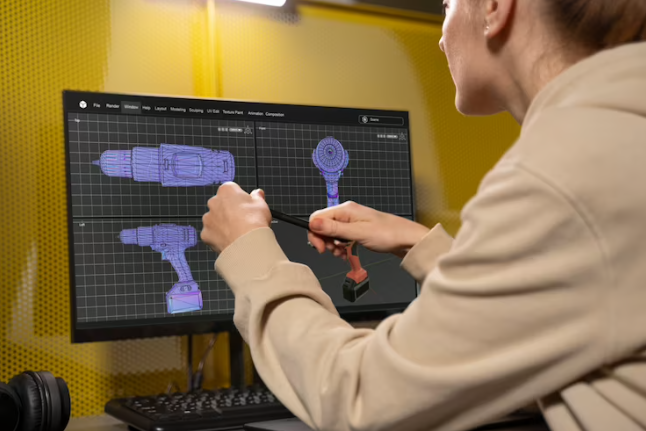Learning 3D modeling can be an exciting and rewarding journey. Here are some steps to help you get started and improve your skills in 3D modeling:
- Define your goals: Determine what you want to achieve with 3D modeling. Whether it’s character modeling, architectural visualization, product design, or animation, having a clear focus will help you structure your learning path.
- Choose the right software: Select a 3D modeling software that suits your needs and is widely used in the industry. Popular options include Autodesk Maya, Blender, 3ds Max, and Cinema 4D. Research each software’s features, user interface, and availability of learning resources to make an informed decision.
- Familiarize yourself with the interface: Spend time exploring the software’s interface and navigation tools. Get comfortable with the layout and understand the purpose of each menu, toolbar, and panel. This familiarity will make your modeling process smoother.
- Learn the fundamentals: Start by understanding the fundamental concepts of 3D modeling, such as polygons, vertices, edges, and UV mapping. Learn about different modeling techniques like box modeling, polygonal modeling, and sculpting. Focus on mastering basic shapes and gradually move on to more complex objects.
- Practice regularly: Consistent practice is key to improving your skills. Dedicate regular time to work on 3D modeling projects and exercises. Experiment with different modeling techniques and challenge yourself with diverse subjects to broaden your expertise.
- Study anatomy and reference materials: If you’re interested in character modeling, studying human anatomy is crucial. Familiarize yourself with proportions, muscle structure, and skeletal systems. Use reference materials like photographs, sketches, and 3D scans to guide your modeling process and achieve accurate results.
- Follow tutorials and online courses: Take advantage of the vast array of tutorials and online courses available for learning 3D modeling. Platforms like YouTube, Udemy, and CG Cookie offer a wide range of resources for beginners and advanced users alike. Work through structured tutorials that cover specific modeling techniques and workflows.
- Join online communities and forums: Engage with the 3D modeling community by joining forums, participating in discussions, and sharing your work. Online communities like Polycount, CGSociety, and ArtStation provide valuable feedback, inspiration, and networking opportunities with fellow artists and professionals.
- Analyze and study existing models: Analyze high-quality 3D models created by experienced artists. Examine their topology, edge flow, and overall structure. Dissecting existing models will help you understand how professionals approach their work and provide insights into industry-standard practices.
- Iterate and seek feedback: Don’t be afraid to iterate on your work and seek feedback from others. Feedback from experienced artists or mentors can help you identify areas for improvement and refine your modeling skills.
- Stay updated and experiment: Keep up with the latest trends, techniques, and software updates in the 3D modeling industry. Experiment with new tools and features to expand your skill set and stay ahead of the curve.
Remember, learning 3D modeling is a continuous process that requires patience, practice, and perseverance. Enjoy the journey, embrace challenges, and let your creativity shine through your models. Good luck!




